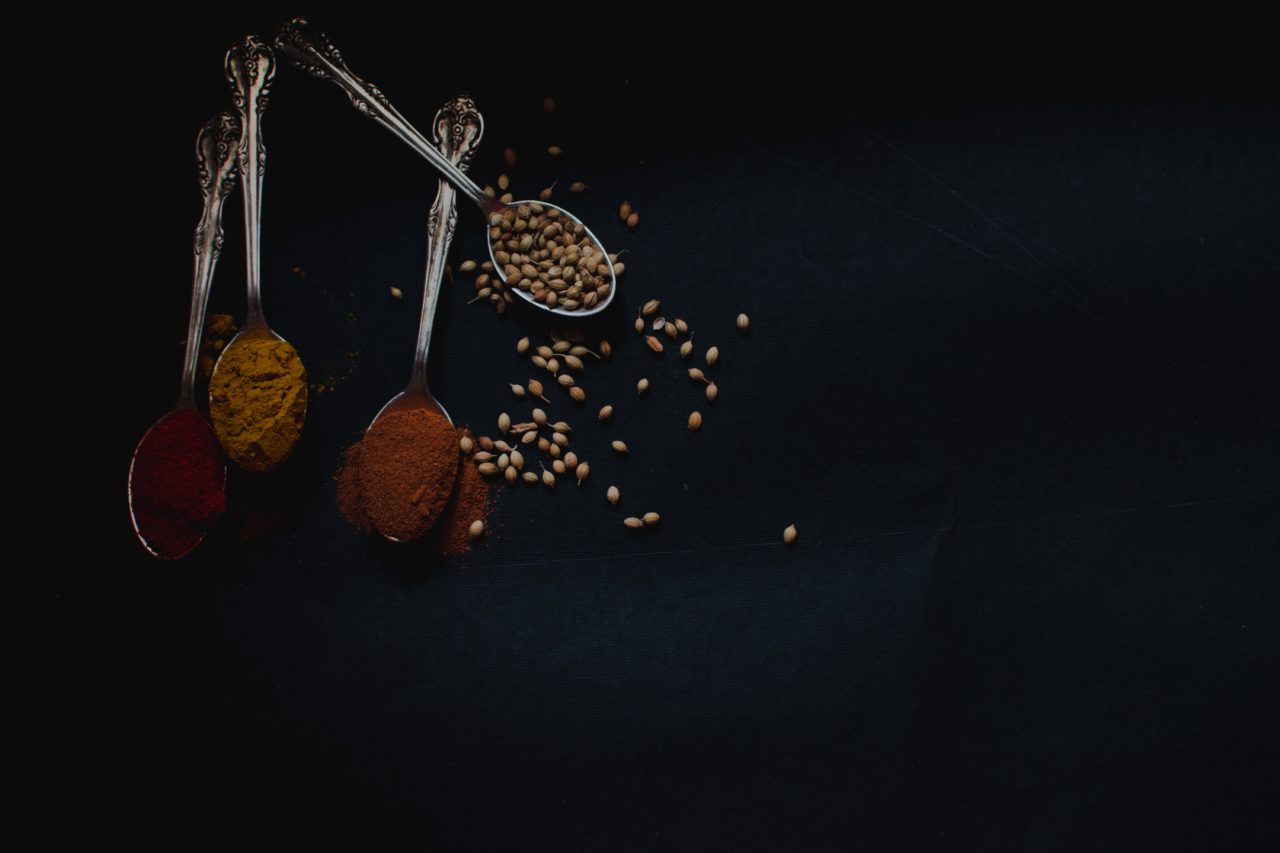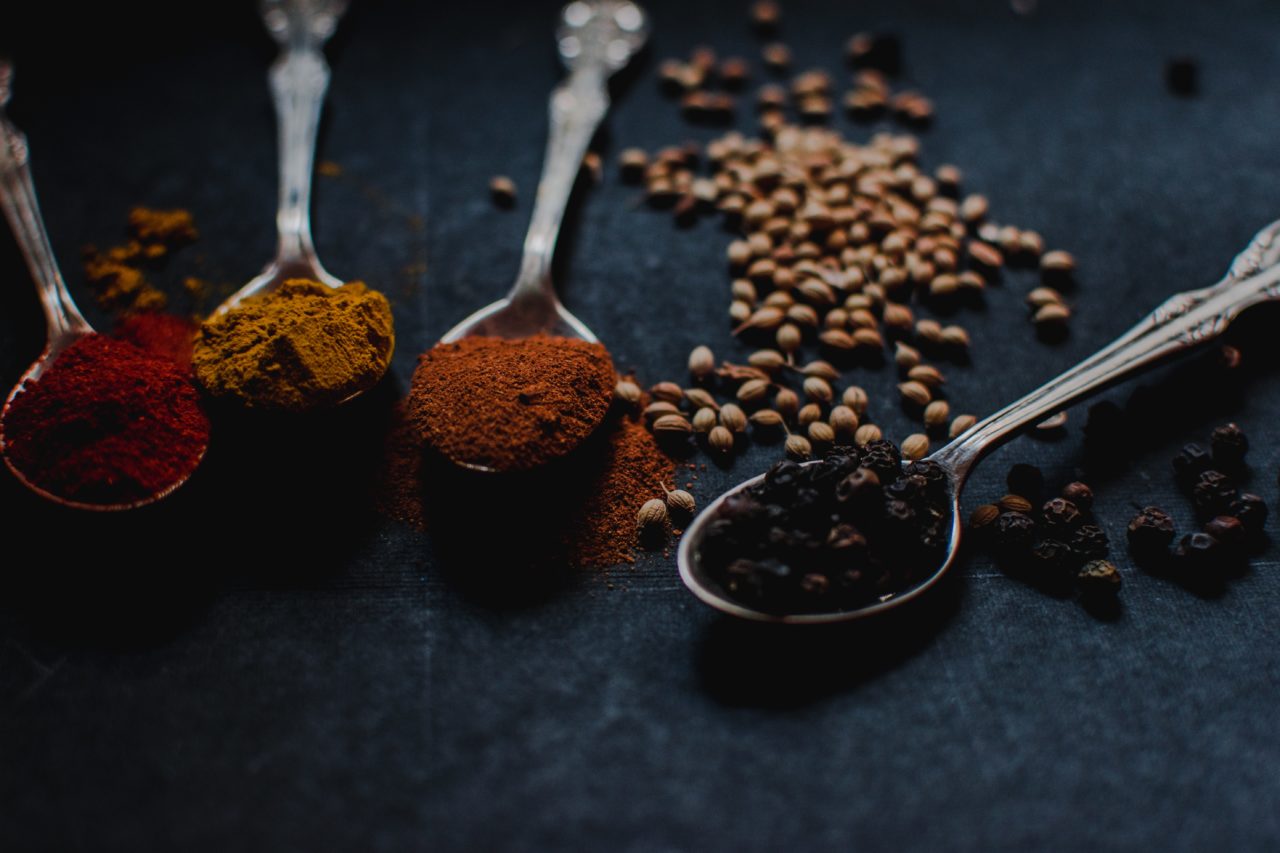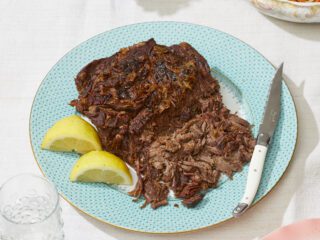In May 2013, my partner Stan and I opened our second location of Valerie Confections in Los Angeles’ historic Grand Central Market. Although the market is currently bustling with vendors offering sustainably-raised meat, turmeric lattes and vegan ramen, it didn’t always look like Brooklyn West.
Actually, the thing that continues to set it apart from other food halls is the thing we were originally most drawn to: the abundance of small ethnic restaurants and grocers, the kind of places Jonathan Gold would go to on his days off.
During those early days, I so enjoyed getting to know the “legacy” vendors and learning more about their offerings. I was particularly drawn to the spice stand named Valeria’s, not just for their great name, but also for the seductive mountains of dried chilies, camarones, spices and beans encircling their stand.
Among the amazing array of ingredients were at least ten varieties of mole.
Valeria’s piqued my interest in mole, and I soon learned that the world of moles was far more complex and varied than I had ever imagined. My experience cooking with moles was previously very limited, so I felt fortunate having this abundance in such close proximity. The earthen-hued pastes fully seduced me and soon I found myself wanting to include these spectacular condiments in my dishes.

As a professional chocolatier, the starting place was obvious, figuring out how to combine one of these moles with a chocolate dessert. Their Mole Rojo – comprised of chiles, biscuit, sesame, almonds, spices and chocolate – folded into a staple brownie recipe transformed it into something far more unique and memorable. The hits of spice, gentle acid and rich soil of flavors gave the brownie context and a new dimension in taste, culture and time.
The traditional method of mole-making is incredibly labor intensive and typically handled by women, an honored position called “molera.” Something beyond the general definition of cooking, the process is more of a ritual frequently involving an entire community. A group might spend a full day making mole for a special occasion, everyone contributing her own part to the communal concoction with the final product approved by the molera. She stands over an enormous flat stone platform, or metate, grinding down the many ingredients that go into each unique mole. A stone-rolling pin moves over the metate, pulverizing the chilies and other ingredients like a giant mortar and pestle. The traditionalists believe the ritualized, manual process respects the flavor. The culture and roots of the dish stay alive by preserving the entire practice.
Moles have four flavor and texture components: chilies or spice, sour, sweet and thickener. Biscuits, masa, plantains, tortilla and day-old bread are all used in different moles, giving the sauce its distinct hearty characteristic. Although mole is generally described as a savory chocolate sauce, the inclusion of cocoa is not a necessity by definition and is frequently absent in many moles.
Mole Poblano with chicken is the most recognizable mole preparation, and a wonderful introductory dish if you are exploring the landscape. Poblano is a red mole with tons of dried chile flavor; this is considered the national dish of Mexico, originally from the state of Puebla.
The traditionalists believe the ritualized, manual process respects the flavor. The culture and roots of the dish stay alive by preserving the entire practice.
Mole Negro is a great progression in tasting, with it’s dark, almost-funky, bitter but boldly sweet profile. It has more chocolate than others (usually), as well as sweet spices like cinnamon, clove and cumin.
Made with cilantro, lots of pumpkin seeds, epazote, jalapeños and tomatillos or tomatoes, Mole Verde generally has lots of bright, citrusy flavor and herbal notes, and a color that can range from bright to light green, depending on the balance of the ingredients. It tastes great with soft cheeses, firm fish and is a perfect complement to grilled or seared vegetables.
My favorite, though, is Mole Cacohuate, a rust-colored paste with heavy sesame, chili and peanut. Like the most nuanced peanut butter you could imagine, depending on the region or molera, this sauce may have up to 30 ingredients. It has become a staple in my home because of it’s versatility and dimension in application.

All moles are condensed and extremely shelf stable. You can apply your own character by reconstituting the sauce with hot water, stock or the addition of fresh herbs before cooking into your main dish. The breadth of moles can’t be locked into a finite number and the continual exploration of these hyper-regional sauces is what makes them so very irresistible. To source good mole, try scouting your local hispanic market or, if in Los Angeles, go to Valeria’s and Chiles Secos at Grand Central Market.
Here are two recipes to get you on your way:
Mole Avocado Toast
Made of pumpkin seeds, herbs, epazote, chilies and green tomatoes, Mole Verde pairs beautifully with endless vegetables and proteins alike. A simple dish, like this avocado toast, creates a platform to amplify the medley of flavors.
Ingredients:
1 Slice rustic toast, approximately 8” across
1 Tablespoon Mole Verde
½-1 Ripe Avocado, depending on size
1 Tablespoon toasted pumpkin seeds
A sprinkle of Sea Salt
A drizzle of Szechuan pepper oil
Directions:
Combine and enjoy.
Mole Sesame Noodles
Mole Cacahuate is a smoky peanut-based mole absent of chocolate with a distinct sweet and spicy depth to the flavor punctuated with a complex medley of herbs and spices. When used as a replacement for peanut butter or tahini, a recipe can develop a refreshing potency that a single ingredient paste can never deliver.
Ingredients:
3 Tablespoons Mole Cacahuate
3 Tablespoons warm water or broth
2 Tablespoons rice vinegar
1 Tablespoon low sodium soy sauce
1 Tablespoon sugar
1 Tablespoon sriracha sauce
1 teaspoon minced ginger
1 teaspoon minced garlic
1 pound ramen or egg noodles
½ pound cooked, shredded chicken
2 Tablespoons toasted black sesame seeds
Finish with a generous amount of sliced scallions and cilantro
Directions:
In a medium-sized bowl, whisk all of the sauce ingredients until fully combined. The sauce should have some mobility, if it appears stiff then add an additional tablespoon of liquid.
Follow the cooking instructions on the package of noodles making sure to leave them slightly al dente.
After draining the noodles in cool water, place them into the sauce bowl and mix until the noodles are thoroughly coated.
Place the shredded chicken over the top of the dressed noodles followed by sesame seeds and a couple handfuls of sliced scallions and plucked cilantro.
Best enjoyed the day it is prepared.
Feature Image via Krista McPhee











